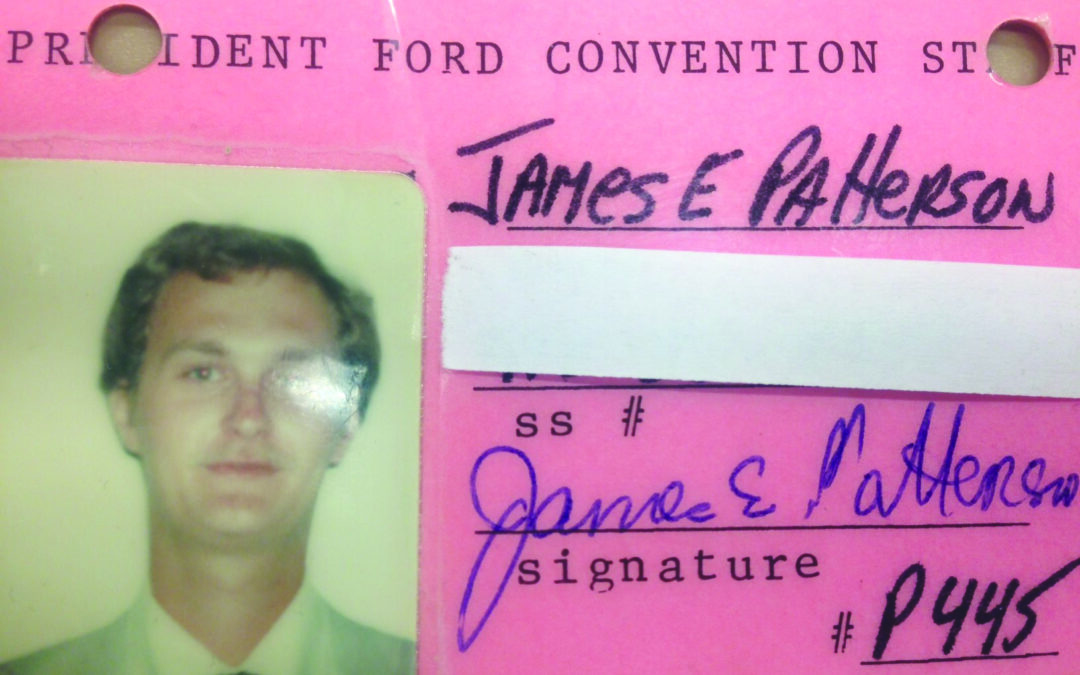BY JAMES PATTERSON
CONTRIBUTED TO THE OBSERVER
OPINION —
In the 1970s, I was an undergraduate at Auburn University when President Gerald R. Ford announced that he would campaign for the GOP Presidential nomination. I joined the Ford campaign on campus and in greater Lee County. A political centrist, Ford’s competition for the presidential nomination was conservative former California Gov. Ronald Reagan, I worked my way from Auburn to the 1976 GOP National Convention in Kansas City, Missouri.
I was raised in Chambers County. My dad, a Korean War veteran, served with Alabama’s Army National Guard for the June 1963 integration of the University of Alabama and the 1965 Selma to Montgomery march.
When I entered Auburn, the Watergate hearings had ended with President Richard Nixon’s resignation in August 1974. Former Michigan Congressman Gerald R. Ford became the 38th president of the United States.
While campaigning for Ford at Auburn, I read a newspaper column by Jack Anderson about a national youth group organized by Jack Ford, son of the president. The group, called the Presidentials, would attend the GOP Convention to work for Ford’s nomination. I joined the group and earned my credential to work for the president’s convention staff. It was at the convention that I first met Dr. Henry Kissinger.
In the campaign, Reagan seized on what he believed were foreign policy mistakes by Ford and Kissinger: The Canal Zone and detente with Russia. Reagan told voters that the U.S. had sovereignty over the Panama Canal. He told voters it was a political weakness for Ford and Kissinger to turn it over to a potentially hostile Panamanian government allied with Communist Cuba. It was a powerful issue for Reagan in Alabama and across the country.
By the time of the convention, Reagan had made Kissinger a political liability to Ford. It was rumored that Kissinger would not attend the convention.
The 1976 GOP National Convention was, to date, the last national political convention where the presidential nominee was unknown until only hours before the event ended. By the end of the convention’s third day, Ford had clinched the nomination.
The next day, Kissinger arrived in Kansas City. His first stop was an airport meeting with the Presidentials. Kissinger talked about an incident in North Korea where two U.S. Army officers had been killed. The gruesome event is called “Panmunjom axe murder incident.”
Kissinger had already briefed Ford and Vice President Nelson Rockefeller. The president acted decisively to end the tense situation. I recollect that Kissinger’s presence was a lesson in diplomacy. He was a lesson in statesmanship. He chose his words carefully. He spoke with precision and directness.
At the Convention’s end, Ford and then-U.S. Senator Bob Dole were the GOP nominees for president and vice president. The very cool Kissinger was on hand to see the Ford political victory over challenger Reagan.
After the Ford presidency, I met Kissinger in less dramatic settings in New York, Washington, D.C. and at the Gerald R. Ford Presidential Museum in Grand Rapids, Michigan. He remained a statesman. In social gatherings, he was charming and personable.
Meeting. Kissinger, President and Mrs. Ford and future President and Mrs. Reagan at the GOP Convention in the summer of 1976 was my most memorable experience at Auburn. I am grateful to my professors for encouraging me to participate in one of the most significant moments in American political history. I encourage readers to learn more about the careers of Ford and Kissinger.
James Patterson is a life member of the American Foreign Service Association and a life member of the Auburn University Alumni Association.


